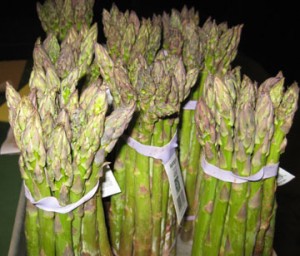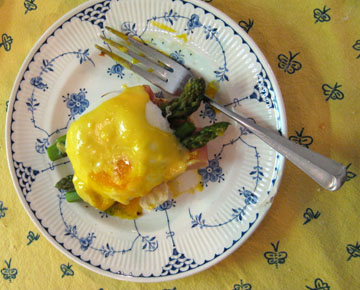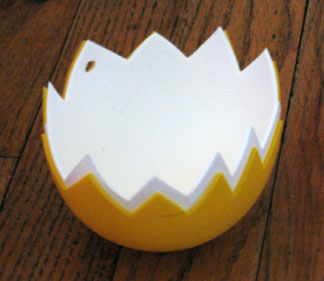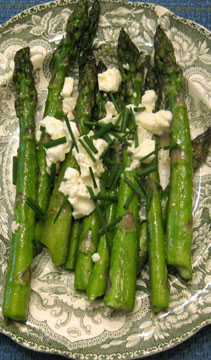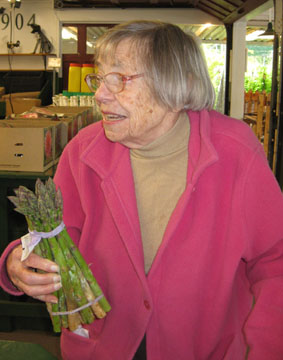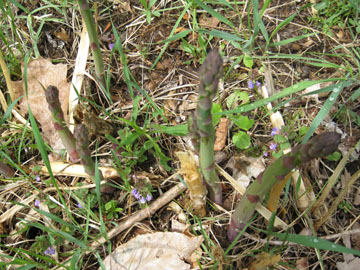
My Sad Asparagus Patch
Here is one more asparagus treat, perfect for the weird miscellaneous stalks that come up in my alleged garden every year. (I know that they would be healthier if I actually weeded the bed, but weeding has never been my specialty.) Since I cut the stalks into small pieces they don’t have to match in any way.
My family served this to my mother Jan (a.k.a. Taffy because she likes to swim in salt water) for Mother’s Day one year. It has become a May staple for us.

Cousin Jane (left) and Sister Leigh present the Penne to Taffy.
1 pound penne
2 pounds fresh asparagus, washed, trimmed, and cut into bite-size pieces
1/2 cup extra virgin olive oil (plus a bit more if you like)
10 large cloves of garlic cut lengthwise into thin pieces
freshly ground pepper to taste
1/2 teaspoon salt (optional—if you put lots of salt in the penne and asparagus water you won’t need it)
1/4 cup (1/2 stick) sweet butter
1/2 pound Prosciutto, thinly sliced and then shredded (optional)
freshly grated Italian cheese (such as Parmesan or Pecorino Romano) to taste—at least 1 cup, and maybe more
1 handful fresh parsley, finely chopped
Directions:
First, cook the penne according to the package instructions. When it is cooked al dente drain it, rinse it in cold water to cool it off, and drain it again.
While the pasta is cooking, place the asparagus in boiling water, and boil for 2 minutes. Carefully drain the asparagus, rinse it with very cold water, and drain it again.
When the pasta is ready and drained, pour the oil into a LARGE skillet, and let it heat over medium heat for about a minute, until it begins to shimmer. The oil will be very hot. Carefully add the pieces of garlic to the oil and cook, stirring vigorously, until the garlic begins to brown. (This won’t take long.)
Add the asparagus, salt (if needed), and pepper to the garlic. Cook for another 2 minutes, shaking or stirring gently. Add the pasta and the butter and cook until the vegetables and pasta are hot and well mixed, 3 to 4 minutes. Turn off the heat, and toss in the Prosciutto.
Carefully transfer the mixture to a serving bowl, and toss in lots of Parmesan cheese. Sprinkle the chopped parsley on top. Serve it to your mother and other guests immediately. Serves 8.
